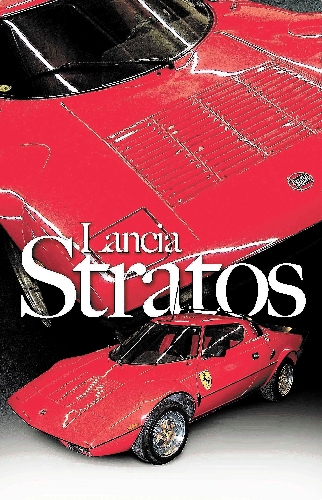Collector-ready Lancia Stratos rally car never caught on
The saying goes that there's a car for every buyer ... eventually. But it would take years for Lancia dealers throughout Europe to liquidate their meager allotments of the Stratos.
Why the most revered automobile to ever compete on the World Rally Championship stage failed to find public acceptance would seem most surprising. After all, it was devilishly quick, tough looking and, with only about 500 produced, a prime candidate for collector-car status.
On the downside, the car was totally unsuited for everyday use. And no wonder: The Stratos was purpose-built for only one mission and that was to compete against the world's best rally-racing teams.
Rallying has always attracted a huge following on the European continent, with automakers spending large fortunes supporting their teams. That was certainly true back in the early 1970s when Lancia, which had become part of the Italian Fiat Automobile conglomerate, operated its own factory effort.
Although Lancia's rallying efforts had proven successful in the mid-1960s, increased competition from Porsche, Renault and other factory prompted the development of an all-new entry. The plan was to devise a car strictly for rallying (other than a few hundred civilian versions required by the rules for public consumption), with virtually zero consideration given to its street manners. As such, a midengine layout was deemed the most efficient way to transfer power to the rear wheels. Providing that thrust would be a 190-horsepower 2.4-liter V-6 originally developed by Ferrari (also part of the Fiat empire) for use in its Dino coupe and spider (roadster) models. Since Dino production was already winding down, there was a surplus of engines that were ideally suited for the Stratos project.
The Dino V-6 used in Lancia's 40 or so competition machines was modified to produce 280 horsepower and a few turbocharged versions were rated at an outrageous 560 horsepower, but proved less than reliable.
The wedge-shaped fiberglass body, penned by Italy's Bertone studio, with its wrap-around fighter-jet windscreen, offered exceptional forward and side visibility. The back view, however, was almost nonexistent and further restricted by rear-window slats. That, of course, wouldn't have bothered the rally pilots since their primary concern was watching the road ahead.
Other than seatbelts, the only other available piece of safety equipment was a external roll bar located behind the seats.
Prototype development began in 1971 and '72, with actual production commencing the following year,
With a very light curb weight of about 2,100 pounds, The Stratos's performance numbers were impressive. With the "stock" motor, zero to 60 mph took just six seconds and top speed was rated at 143 mph, which was fast enough to conquer most rally events, and conquer them it did, winning the World Rally Championship in 1974, 1975 and 1976.
With the merger of the Lancia and Fiat rally teams under the Fiat banner in 1977, the Stratos subsequently gave way to Fiat's 131 sedan as its primary competition car. However, a number of privately owned entries enjoyed rallying success with the Stratos for many years after.
But what of the hundreds of barely legal unsold versions churned out for private consumption? That problem plagued Lancia and its European dealer group for years. The Stratos was totally unsuitable to anyone other than its most fanatical supporters. The extremely cramped cockpit was made even worse by the awkwardly offset pedals that failed to align with the steering wheel. And with a complete absence of insulation, conversation between driver and passenger was almost impossible. As for luggage space, it was minimal since the one-piece nose clip hid the radiator, cooling fans and spare tire, while the rear lid contained mostly the powertrain.
Driving the Stratos was also challenging. The extra-stiff clutch and accelerator pedal reportedly made launching the car almost impossible without lurching or stalling. Only the smooth-shifting five-speed gearbox and the car's power-to-weight ratio somewhat justified all the strain and effort.
Finally, with its immodest $17,000 price tag (less steep factory/dealer discounts) the Stratos was a tough sell. To get them off the books, Lancia reportedly gave some of these unsold street beasts to its dealer network as sales prizes.
Today, the Stratos is considered to be one of the top race-bred road cars ever made and is a top draw at any museum, concours event or classic car auction. In this respect, the glory days of this winsome and winningest of Lancias appear to have returned.
Malcolm Gunn is a feature writer with Wheelbase Communications. He can be reached on the Web at www.wheelbase.ws/mailbag.html. Wheelbase Communications supplies automotive news and features to newspapers across North America.














